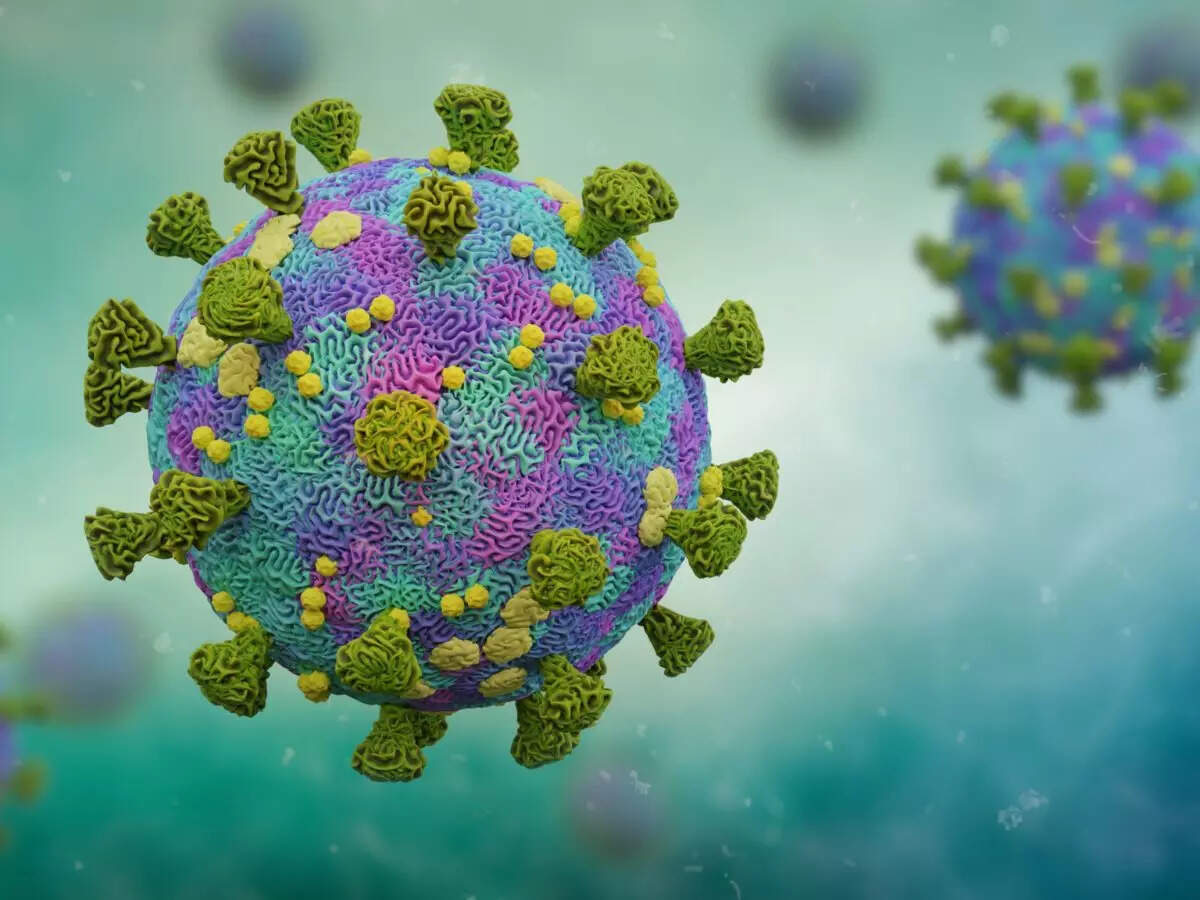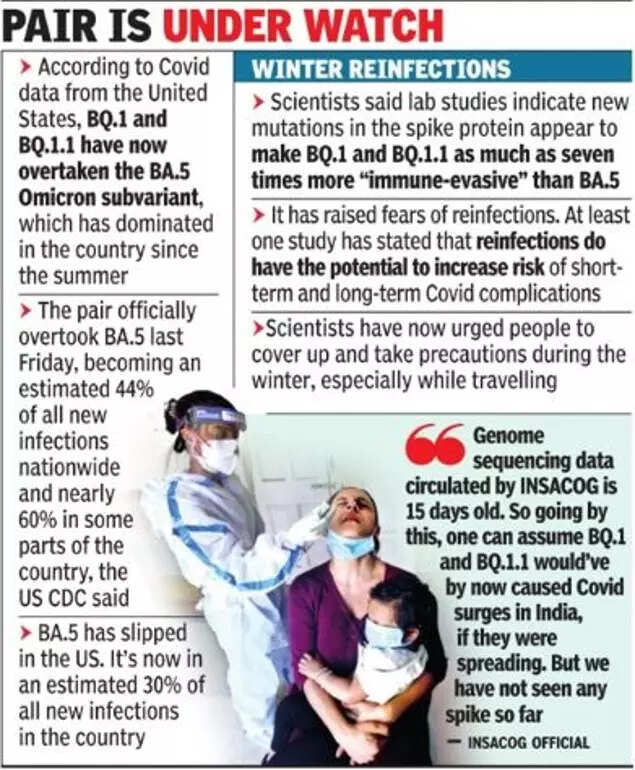[ad_1]

Pune: Just days after the detection of three cases of Omicron’s BQ. 1 — one each from Kerala, Maharashtra and Tamil Nadu — scientists in India have found two Covid samples with BQ. 1. 1, another offshoot of BA. 5. The two samples are from Pune and New Delhi.
BQ. 1 and BQ. 1. 1, now dominant in the United States, recently raised fears of a winter surge there. Last week, US media reports said the pair had already raced past BA. 5 and currently account for an estimated 44% of all new infections nationwide.
However, experts in India told the media agency on Saturday the two subvariants have not had any impact on caseloads so far.
A top INSACOG official said: “BQ. 1 and BQ. 1. 1 have been found in only five genome samples so far. Genome sequencing data circulated by INSACOG is 15 days old. So going by this, one can assume the pair would’ve by now caused Covid surges in India, if they were spreading. But we are yet to see a spike. So, as of now, these subvariants don’t seem to hold much significance. But we are still keeping watch. ”
The official added that India continues to see a decline in Covid cases, now down to 800-900 per day.
Maharashtra’s coordinator for genome sequencing, Dr Rajesh Karyakarte, said: “One case from Pune was identified as a BQ. 1. 1 infection recently, which we reported to INSACOG. Overall, two cases of these offshoots of BA. 5 — one case with BQ. 1 and another with BQ. 1. 1 — have been detected. But despite the discovery, cases in Maharashtra continue to drop. ”
Dr Karyakarte added: “Pune, Maharashtra and India present a curious case as BA. 4 and BA. 5 never ended up growing here, to the extent they did in the United States. We feel Omicron subvariant BA. 2 and its sub-lineages like BA. 2. 38/74/75/76 and now the recombinant XBB may be exerting pressure on BA. 5 descendants BQ. 1 and BQ. 1. 1, preventing their growth in India. BA. 5 could not make an impact in India so it’s likely something similar could come about in case of BQ. 1 and BQ. 1. 1. But we are doing more in-depth studies to gauge the severity of cases. ”
Another INSACOG official said newer SARS-CoV-2 will continue to show up every now and then.
“There should not be any worry until there is a variant/subvariant capable of causing a significant increase in Covid severity, hospitalisations and deaths. Even in US regions with high share of BQ. 1 and BQ. 1. 1 infections, hospitalisations have been stable. There was so much hue and cry when XBB was found in India but, so far, we have had only 400-odd cases of XBB and its subline ages. There is no alarm as of now. ”
XBB is a hybrid of two omicron BA. 2 lineages. Such a variant is created when two different sub-variants combine and exchange parts of their genetic material.
XBB in late October had caused a small Covid spike in Singapore, but caseloads there have since dropped. There was also a small rise in hospitalisations, but it was not as sharp as Singapore’s previous Covid waves. Importantly, its health ministry has estimated that those infected by XBB have a 30% lower risk of hospitalisation when compared with BA. 5.
XBB is not the first hybrid variant either. There was XE earlier this year.
BQ. 1’s offspring BQ. 1. 1 is considered to be the most immune-evasive lineage to date. The L452R mutation both BQ. 1 and BQ. 1. 1 share with Delta has in some preliminary studies in mice shown increased fusogenicity (viruscell fusion) that is associated with increased pathogenicity and severity.
Scientists have cited this data to warn people about a possible winter surge of Covid in some regions of the world.
In the United States, public health experts have now called for some level of precautions, including masking and distancing.
[ad_2]
Source link

